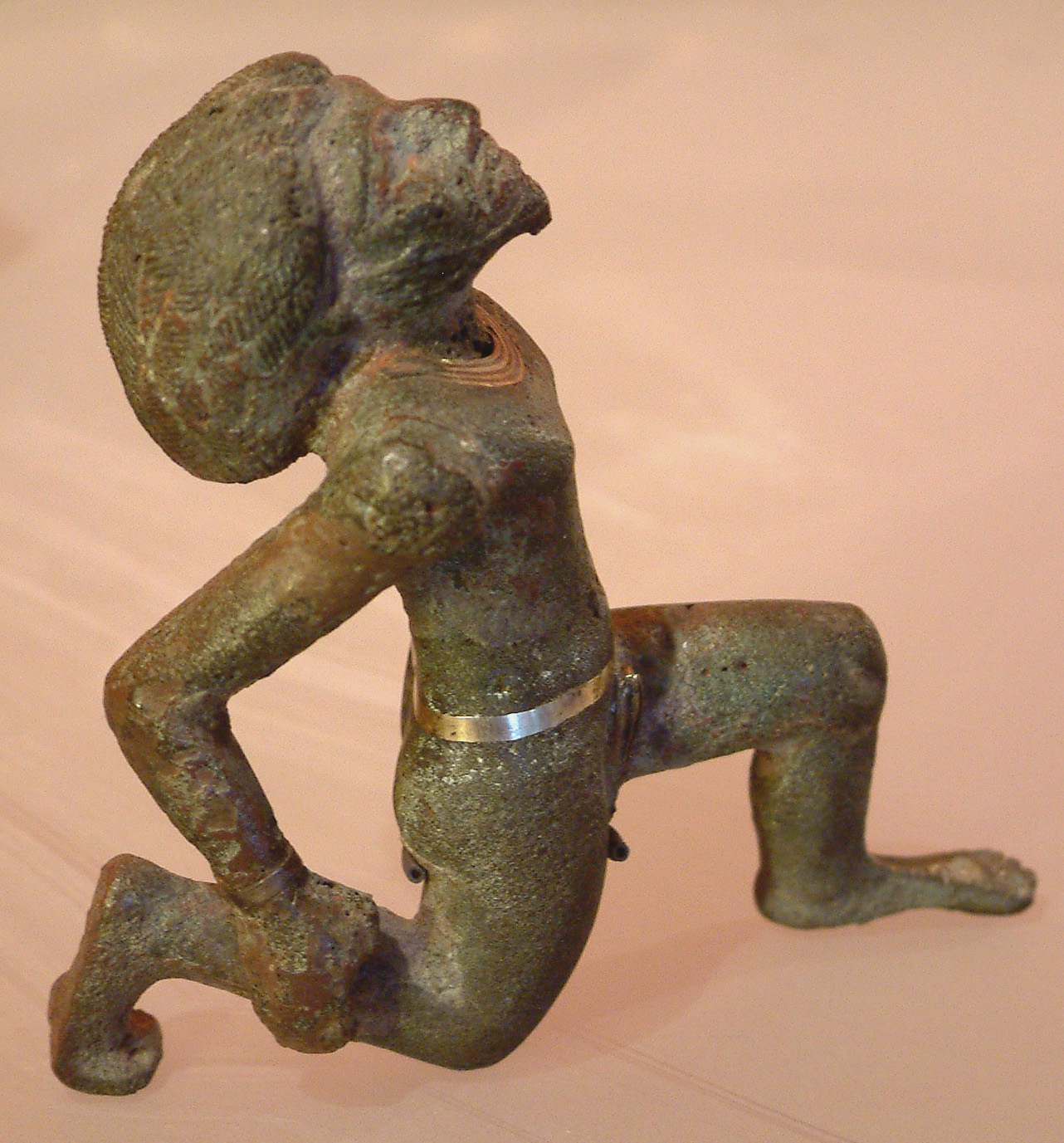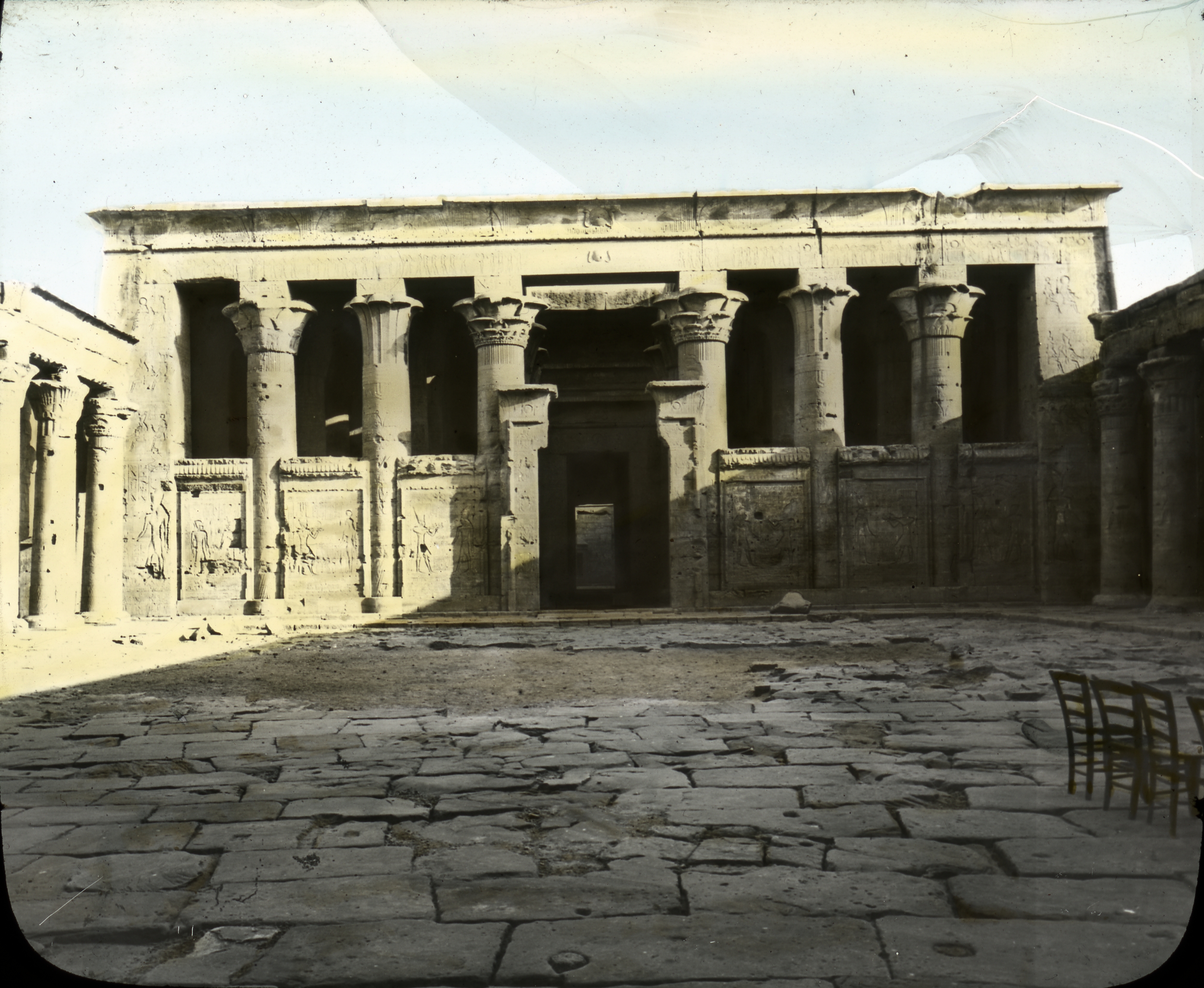|
Wadi El Natrun
Wadi El Natrun (Arabic: "Valley of Natron"; Coptic: , "measure of the hearts") is a depression in northern Egypt that is located below sea level and below the Nile River level. The valley contains several alkaline lakes, natron-rich salt deposits, salt marshes and freshwater marshes. In Christian literature it is usually known as Scetis ( in Hellenistic Greek) or Skete (, plural in ecclesiastical Greek). It is one of the three early Christian monastic centers located in the Nitrian Desert of the northwestern Nile Delta. The other two monastic centers are Nitria and Kellia. Scetis, now called Wadi El Natrun, is best known today because its ancient monasteries remain in use, unlike Nitria and Kellia which have only archaeological remains. The desertified valley around Scetis in particular may be called the Desert of Scetis.. Fossil discoveries The area is one of the best known sites containing large numbers of fossils of large pre-historic animals in Egypt, and was ... [...More Info...] [...Related Items...] OR: [Wikipedia] [Google] [Baidu] |
Egypt
Egypt ( ar, مصر , ), officially the Arab Republic of Egypt, is a List of transcontinental countries, transcontinental country spanning the North Africa, northeast corner of Africa and Western Asia, southwest corner of Asia via a land bridge formed by the Sinai Peninsula. It is bordered by the Mediterranean Sea to northern coast of Egypt, the north, the Gaza Strip of State of Palestine, Palestine and Israel to Egypt–Israel barrier, the northeast, the Red Sea to the east, Sudan to Egypt–Sudan border, the south, and Libya to Egypt–Libya border, the west. The Gulf of Aqaba in the northeast separates Egypt from Jordan and Saudi Arabia. Cairo is the capital and list of cities and towns in Egypt, largest city of Egypt, while Alexandria, the second-largest city, is an important industrial and tourist hub at the Northern coast of Egypt, Mediterranean coast. At approximately 100 million inhabitants, Egypt is the List of countries and dependencies by population, 14th-most populat ... [...More Info...] [...Related Items...] OR: [Wikipedia] [Google] [Baidu] |
Nitria (monastic Site)
Nitria (also called the Mountain of Nitria or Petoou Mpihosm in Greek and Latin sources) is one of the earliest Christian monastic sites in Egypt and is located in the Nitrian Desert. It was the first of the three major centers of Christian monastic activity in the Lower Egypt, the other two being Kellia and Scetis.Roger S. Bagnall, etc. ''Egypt from Alexander to the early Christians: An Archaeological and Historical Guide'', Getty Publications, 2004pg. 108-112/ref> History Nitria was founded in c. 325-330 by Amoun of Nitria and quickly attracted thousands of monks through the remainder of the 4th century. By 390, it had evolved from a loose collection of solitary monks to an organized settlement of multiple cenobitic monasteries, and included bankers, merchants, and sellers. Jerome, who visited Nitria in 386, said that it had over five-thousand monks. Palladius of Galatia, who lived there in 390, gave a similar estimate in his Lausaic History'. Christian pilgrims from the ... [...More Info...] [...Related Items...] OR: [Wikipedia] [Google] [Baidu] |
Seventeenth Dynasty Of Egypt
The Seventeenth Dynasty of Egypt (notated Dynasty XVII, alternatively 17th Dynasty or Dynasty 17) was a dynasty of pharaohs that ruled in Upper Egypt during the late Second Intermediate Period of Egypt, Second Intermediate Period, approximately from 1580 to 1550 BC. Its mainly Thebes, Egypt, Theban rulers are contemporary with the Hyksos of the Fifteenth Dynasty of Egypt, Fifteenth Dynasty and succeed the Sixteenth Dynasty of Egypt, Sixteenth Dynasty, which was also based in Thebes. In March 2012, French archeologists examining a limestone door in the Precinct of Amun-Re at Karnak discovered hieroglyphs with the name Senakhtenre Ahmose, Senakhtenre, the first evidence of this king dating to his lifetime. The last two kings of the dynasty opposed the Hyksos rule over Egypt and initiated a war that would rid Egypt of the Hyksos kings and began a period of unified rule, the New Kingdom of Egypt. Kamose, the second son of Seqenenre Tao and last king of the Seventeenth Dynasty, was t ... [...More Info...] [...Related Items...] OR: [Wikipedia] [Google] [Baidu] |
Ramesses III
Usermaatre Meryamun Ramesses III (also written Ramses and Rameses) was the second Pharaoh of the Twentieth Dynasty in Ancient Egypt. He is thought to have reigned from 26 March 1186 to 15 April 1155 BC and is considered to be the last great monarch of the New Kingdom to wield any substantial authority over Egypt. His long reign saw the decline of Egyptian political and economic power, linked to a series of invasions and internal economic problems that also plagued pharaohs before him. This coincided with a decline in the cultural sphere of Ancient Egypt. However, his successful defense was able to slow down the decline, although it still meant that his successors would have a weaker military. He has also been described as a "warrior Pharaoh" due to his strong military strategies. He led the way by defeating the invaders known as "the Sea Peoples", who had caused destruction in other civilizations and empires. He was able to save Egypt from collapsing at the time when many other ... [...More Info...] [...Related Items...] OR: [Wikipedia] [Google] [Baidu] |
Libu
The Libu ( egy, rbw; also transcribed Rebu, Lebu, Lbou, Libou) were an Ancient Libyan tribe of Berber origin, from which the name ''Libya'' derives. Early history Their occupation of Ancient Libya is first attested in Egyptian language texts from the New Kingdom, especially from the Ramesside Period. The earliest occurrence is in a Ramesses II inscription. There were no vowels in the Egyptian script. The name Libu is written as '' rbw'' in Egyptian hieroglyphs. In the Great Karnak Inscription Merneptah describes how hostilities between Egypt and Libya broke out in his regnal year 5 (1208 BCE) and how a coalition of Libu and Sea Peoples led by the chief of the Libu Meryey was defeated. ''Libu'' appears as an ethnic name on ''the Merneptah Stele'', also known as the ''Israel Stele''. Ramesses III defeated the Libyans in the 5th year of his reign, but six years later the Libyans joined the Meshwesh and invaded the western Delta and were defeated again. This name ''Libu'' was ... [...More Info...] [...Related Items...] OR: [Wikipedia] [Google] [Baidu] |
Libyan
Demographics of Libya is the demography of Libya, specifically covering population density, ethnicity, education level, health of the populace, economic status, and religious affiliations, as well as other aspects of the Libyan population. The Libyan population resides in the country of Libya, a territory located on the Mediterranean coast of North Africa, to the west of and adjacent to Egypt. Libyans live in Tripoli. It is the capital of the country and first in terms of urban population, as well as Benghazi, Libya's second largest city. History Historically Berber, over the centuries, Libya has been occupied by the Phoenicians, Greeks, Romans, Arabs, and Italians. The Phoenicians had a big impact on Libya. Many of the coastal towns and cities of Libya were founded by the Phoenicians as trade outposts within the southern Mediterranean coast in order to facilitate the Phoenician business activities in the area. Starting in the 8th century BC, Libya was under the rule of ... [...More Info...] [...Related Items...] OR: [Wikipedia] [Google] [Baidu] |
Temple Of Edfu
The Temple of Edfu is an Egyptian temple located on the west bank of the Nile in Edfu, Upper Egypt. The city was known in the Hellenistic period in grc-koi, Ἀπόλλωνος πόλις and in Latin as ''Apollonopolis Magna'', after the chief god Horus, who was identified as Apollo under the ''interpretatio graeca''. It is one of the best preserved shrines in Egypt. The temple was built in the Ptolemaic Kingdom between 237 and 57 BC. The inscriptions on its walls provide important information on language, myth and religion during the Hellenistic period in Egypt. In particular, the Temple's inscribed building texts "provide details othof its construction, and also preserve information about the mythical interpretation of this and all other temples as the Island of Creation." There are also "important scenes and inscriptions of the Sacred Drama which related the age-old conflict between Horus and Seth." They are translated by the Edfu-Project. History Edfu was one of several ... [...More Info...] [...Related Items...] OR: [Wikipedia] [Google] [Baidu] |
Eloquent Peasant
''The Eloquent Peasant'' (, "a peasant good of speech") is an Ancient Egyptian story that was composed around 1850 BCE during the time of the Middle Kingdom in Egypt. It is one of the longest Egyptian tales that has survived completed. The tale is about a peasant, Khun-Anup, who stumbles upon the property of the high steward, the noble Rensi son of Meru, guarded by its harsh overseer, Nemtynakht. It is set in the Ninth or Tenth Dynasty around Herakleopolis. This tale is described as an elaborate reflection on the connection – or disconnection – of ethical order and refined speech, as transliterated into refined writing. Story summary The story begins with a poor peasant, Khun-Anup, traveling to market with his donkeys heavily laden with goods to exchange for supplies for his family. While Khun-Anup was en route, Nemtynakht, a vassal of the high steward Rensi, notices the peasant approaching his lands and devises a scheme to steal Khun-Anup's donkeys and supplies. Nemtynakht ... [...More Info...] [...Related Items...] OR: [Wikipedia] [Google] [Baidu] |
Sadat City
Sadat City ( ar, مدينة السادات ' ) is a city in the Monufia Governorate, Egypt. It is named after late president Anwar Sadat. The city is located northwest of Cairo. It is a first generation new urban community and one of the largest industrial cities in the country. The city is surrounded by a 350 km2 green belt, which has earned it a place in the top ten list of environmentally friendly industrial cities in the Middle East. Industry Sadat City has industry in a variety of sectors and in 2017, more land was slated and offered for industrial investment in Sadat. Climate Köppen-Geiger climate classification system classifies its climate as hot desert (BWh). See also * List of cities and towns in Egypt * Anwar Sadat Muhammad Anwar el-Sadat, (25 December 1918 – 6 October 1981) was an Egyptian politician and military officer who served as the third president of Egypt, from 15 October 1970 until his assassination by fundamentalist army o ... [...More Info...] [...Related Items...] OR: [Wikipedia] [Google] [Baidu] |
Adrienne Mayor
Adrienne Mayor (born 1946) is a historian of ancient science and a classical folklorist. Mayor specializes in ancient history and the study of "folk science", or how pre-scientific cultures interpreted data about the natural world, and how these interpretations form the basis of many ancient myths, folklore and popular beliefs. Her work in pre-scientific fossil discoveries and traditional interpretations of paleontological remains has opened up a new field within the emerging discipline of geomythology and classical folklore. Mayor's book, ''Greek Fire, Poison Arrows, & the Scorpion Bombs'', on the origins of biological and chemical warfare revealed the ancient roots of poison weaponry and tactics. Life From 1980 to 1996, she worked as a copy editor, and printmaker. Since 2006, Mayor has been a research scholar in the Classics Department and the History and Philosophy of Science Program at Stanford University. Mayor has published books and articles on the history of automatons ... [...More Info...] [...Related Items...] OR: [Wikipedia] [Google] [Baidu] |




